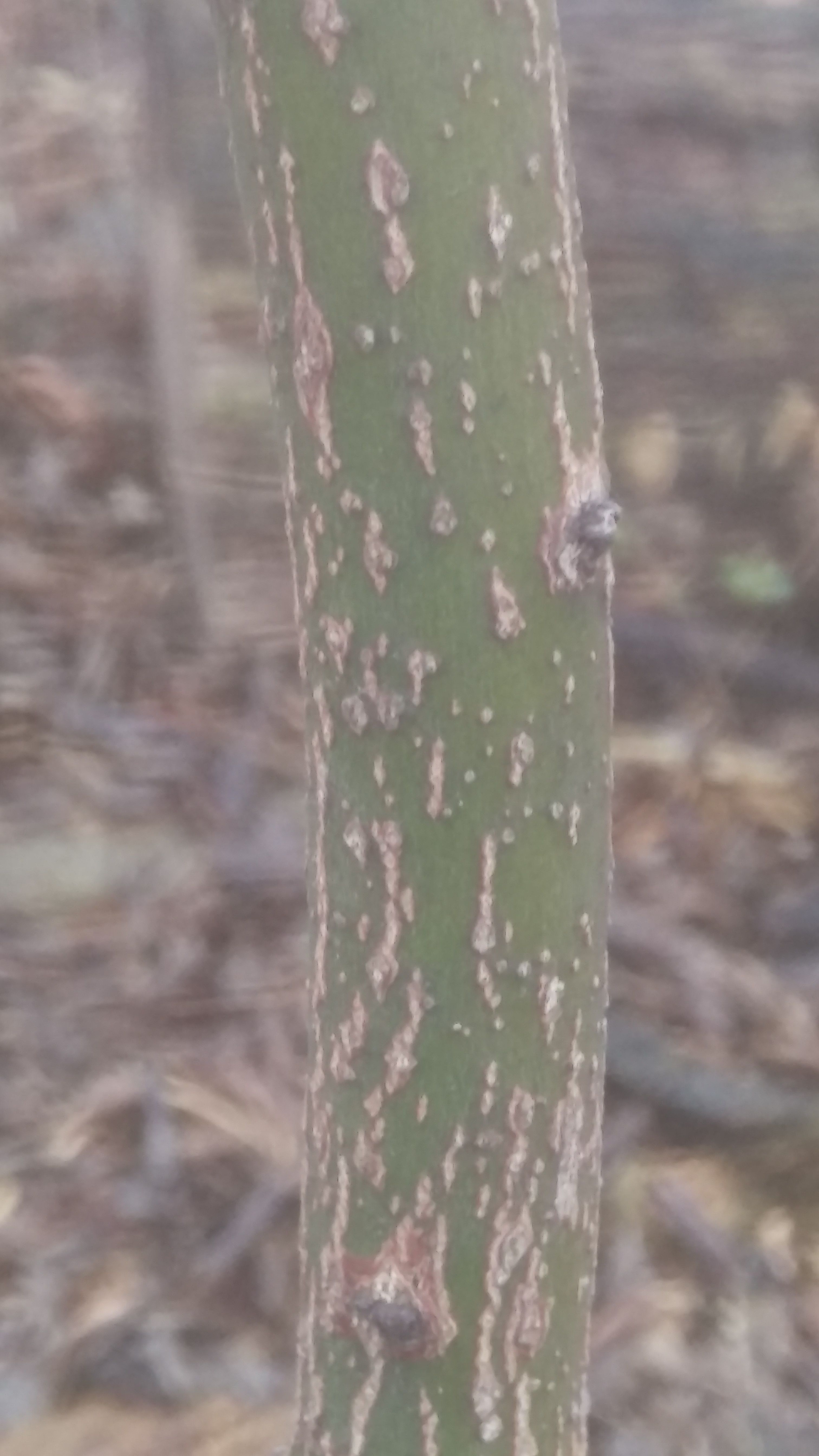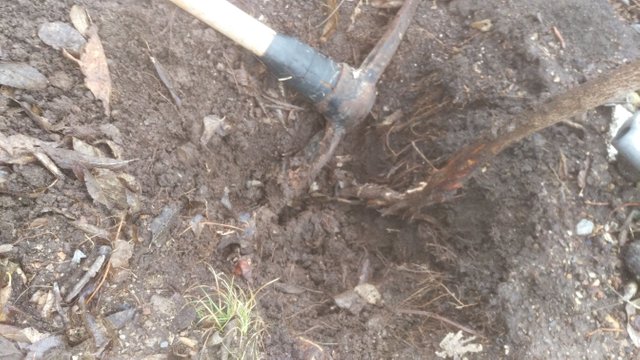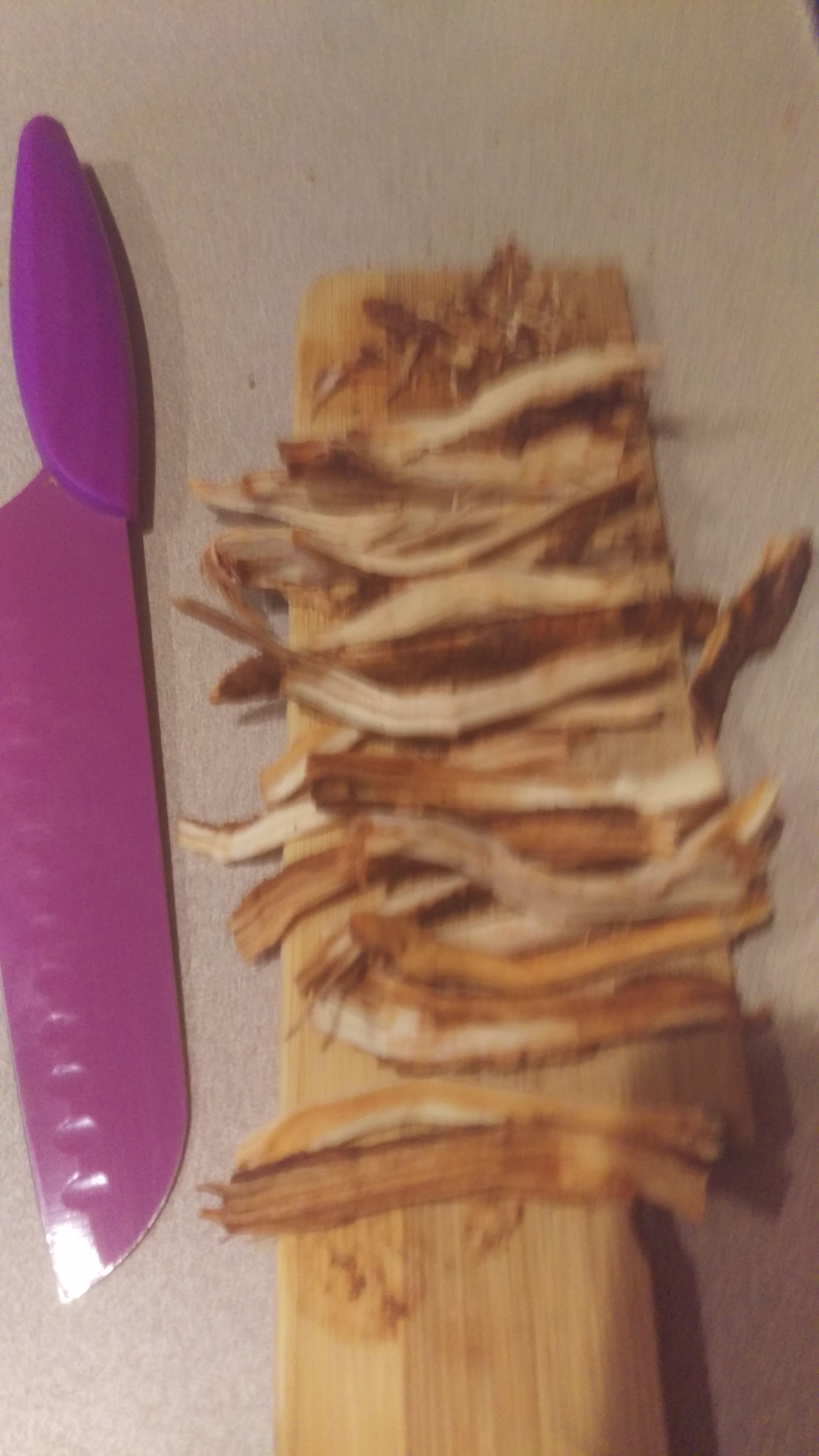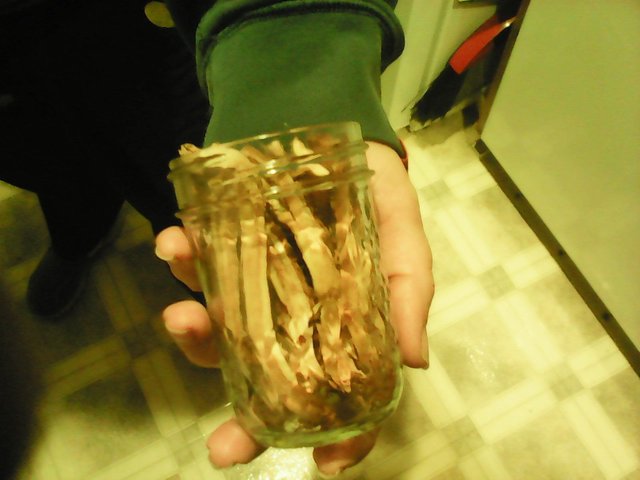Winter foraging for springtime Sassafras tea!
Now is a great time to forage for many useful plants, as long as the earth is in a daytime thaw. Forget about how desolate it looks through the window. My sister recently rooted up some yucca for washing, and sunchoke fried up would be delicious this time of year. Today I decided to get out and harvest some sassafras root. Sassafras is easy to spot when the leaves are on, The branches have three different shapes of leaves on them. The one that sticks out most to me is one shaped like a mitten. Towering matured trees shoot roots out dozens of feet and along these lines, saplings pop up. It is pretty easy to dig out a medium sized sapling or a few tiny ones. My gram-muh used to harvest from the same tree every year; large but scraggly, growing on a hillside, with the roots protruding out from the gravely soil so she was able to just cut off the tips of exposed roots without digging! Once you spot the leaves in summer, you can go back to harvest from these same trees anytime and once you become familiar you'd easily be able to point out the spotty bark pattern on its green twiggy boughs in the leafless winter.

This posting contains a lot of scary languge, but sassafras is an amazing plant and natures bloodthinner. Sassafras contains safrole, a volatile substance which some people are highly allergic to. In the 1950's American scientists at the FDA injected labrats with concentrated safrole oil. Cruel, prolonged intravenous exposure caused many of the test animals to develop cancers and 'turn'.
(This is where i feel obligated to clearly state that this article is about plant medicine and a delicious hot tea my family makes. There are no code-words here. Tea is tea, medicine is medicine, none of the plants we discuss in any of my articles are intended for misuse or lethal-intoxication.)
In 1960, the FDA outlawed the use of safrole in commercially prepared food and drink. This effected some confectioners but mostly the beverage industry that used sassafras as the main flavoring for root beers and sarsaprillas (notice the namesakes). The natives had knowledge about the properties of sassafras and its ability to purify the body and thin a persons blood, The appalachian folk learned this ol' wives tale of drinking sassafras tea to thin the blood and treat stasis; a condition marked by slow, stale blood flow from winter inactivity.
Sure enough, modern medicine warns one of the effects of safrole is thinning of blood. Ladies who are pregnant or nursing and people with heart disease or diabetes should not have sassafras tea. Safrole may interact negatively with some prescription medications, and a medical professional might say that it's toxic and should not be consumed. But it is our annual springtime wellness ritual.
Safrole is also present in so many plants; Black pepper, Basil, and anise. So unless you have a valid concern, dont be a scaredy cat. The highest concentrations from sassafras are in the rootbark so just peel the root before use, instead of having second thoughts.

I've heard that an element in Appalachian folklore similar to the buck-eye is to carry a slice of sassafras bark in your pocket (not for good luck) as protection from the evil-eye. It's tradition to collect the sassafas root in winter and let it cure until the trees start budding, when we brew it into the very aromatic and savory hot tea. We only make it a few times each spring. I've been enjoying it since I was a kid, and look forward to drinking it at the first sign of spring.
Nowadays Gram-muh is on blood thinners so she decided to stop sipping sass a few years ago, fearing drug interactions; but today she shared with me having dreams as a little girl about finding giant sassafras bushes as big as trees! One day she realized that sassafras is the tree, we are only looking down to find young plants that are easy to harvest coming from the mother trees root.
This morning was wet so I knew it would be easy digging and went hunting. You want to collect sassafras during winter when the sap is down in the base of the tree.
If you nick the bark with a mis-swing of the shovel, a strong root beer scent will waft right through you. Just hack off a few inches of root, wash it, and peel it if you want to (we don't). Sassafras is a popular small timber to keep for a staff, cane, or walking stick if you've chosen larger sapling.
Cut the root into pieces about the length of your finger, and use a butcher knife to split the miniature logs like firewood in thin chunks. Store it in a jar, bag, or heck just throw your tied bundle on a window ledge.

When making the tea, a coffee-cup sized serving is made with pieces amounting to about the size of your finger or about a cups-worth makes about a 12-cup pt, just boil the split root in a pot of water to desired strength. I like it when it is very yellow to orange which takes steeping for 10 or 15 mins. When it is red it is too strong and will be a little bitter. It will be really good with a spoon of honey, molasses, or sugar. This tea is a strong flavor that can even mask artificial sweetener if you prefer chemicals? I took the photos myself, this morning. They show only the harvesting and preparation of the root. A person could brew up some tea today, and it smells so good i'm tempted to, but i won't be making it for another month or two until the time is right; so I will update with tea prep photos at that time. Thank you, and enjoy!!

Congratulations @medicinewheel, your post has been selected by the @asapers for a resteem and a feature in our brand new curation post. Issue 7
What does this mean for you? Well first an upvote from some members of the team, we are no @curie but who is going to be unhappy with some extra upvotes. Second each post featured in the article will receive a 10% share of the curation post.
Keep up the great work and please consider supporting the @asapers with a follow and an upvote on the post you feature in. Please wait seven days for payout.
Your friendly @asapers
Giving back A.S.A.P
Super, I take it as a huge compliment and a privilege to be in your curation post! I'm really appreciative; meaningful feedback and topic-related interaction of course releases a burst of endorphins, thank you for that rush you provide to your featured Steemians :)
Your post has been featured in this week's earth-centered curation @the-hearth.
Thanks for writing such fantastic and inspiring content!
Great post. I really enjoy hearing about nature based remedies and folklore from other countries
Back at you! Your postings about bush food are really cool, I want to try salty grapes so bad, they sound really good. Prehaps i'll find some jam or something online.
I dont know of anyone local making it this year.
This brings back so many memories. My mother seemed to be able to find a your Sassafras tree everywhere we went. She had to gather some and would go home and make Sassafras tea. I never acquired a taste for it or root beer. But she and my brother loved it!
I have added a link to this post in the foraging category on Sotall.org. I'm building a directory of Steemit posts from the homesteading, foraging, survival categories and this post fits perfectly!
Awesome, thank you @fernowl13! i would def be interested in checking it out! Thank you for your comment, and have a blessed day!
Lovely post, always try to get a sassafrass hunt in each year! One of my favorite activities, especially since I learned the scratch and sniff test when its leaves are gone in winter! I always include the safrole/mouse/fda story when I talk about its nature as well! Resteemed!
Scratch and sniff! Great tip, thank you for contribution, and I appreciate your resteeming @dartistdreams! I admire your post about three sisters planting, the diagrams are awesome! I want to try it this year for sure. I wasnt planning on growing squash, you reckon a jewelry gourd would work just as well?
Probably! Squash really just see for more groundcover, apart from edible mass. I'm not too keen on most squash myself. If you know of any other edible/medicinal plants that tend to have large leaves/creeping vine/fast growing they should cover the bases left by squash.
thanks so much for writing this inspiring and educational lived-experience profile of a wonderful plant! we love sassafrass and appreciated your humor, down to earthness, and knowledge. we've resteeded you @the-hearth, @mountainjewel's curation page for high quality earth-centered content. Keep it up & Thanks!
Can’t wait to get out there and get some sassafras of my own. I’d like to get one growing in my yard. I was planning a foraging day for Friday, but the weather’s turned, so I’ll have to reschedule. You tell a wonderful story!
Hey, I’ve nominated you for the Seven Day Black and White Photo Challenge. Check it out!